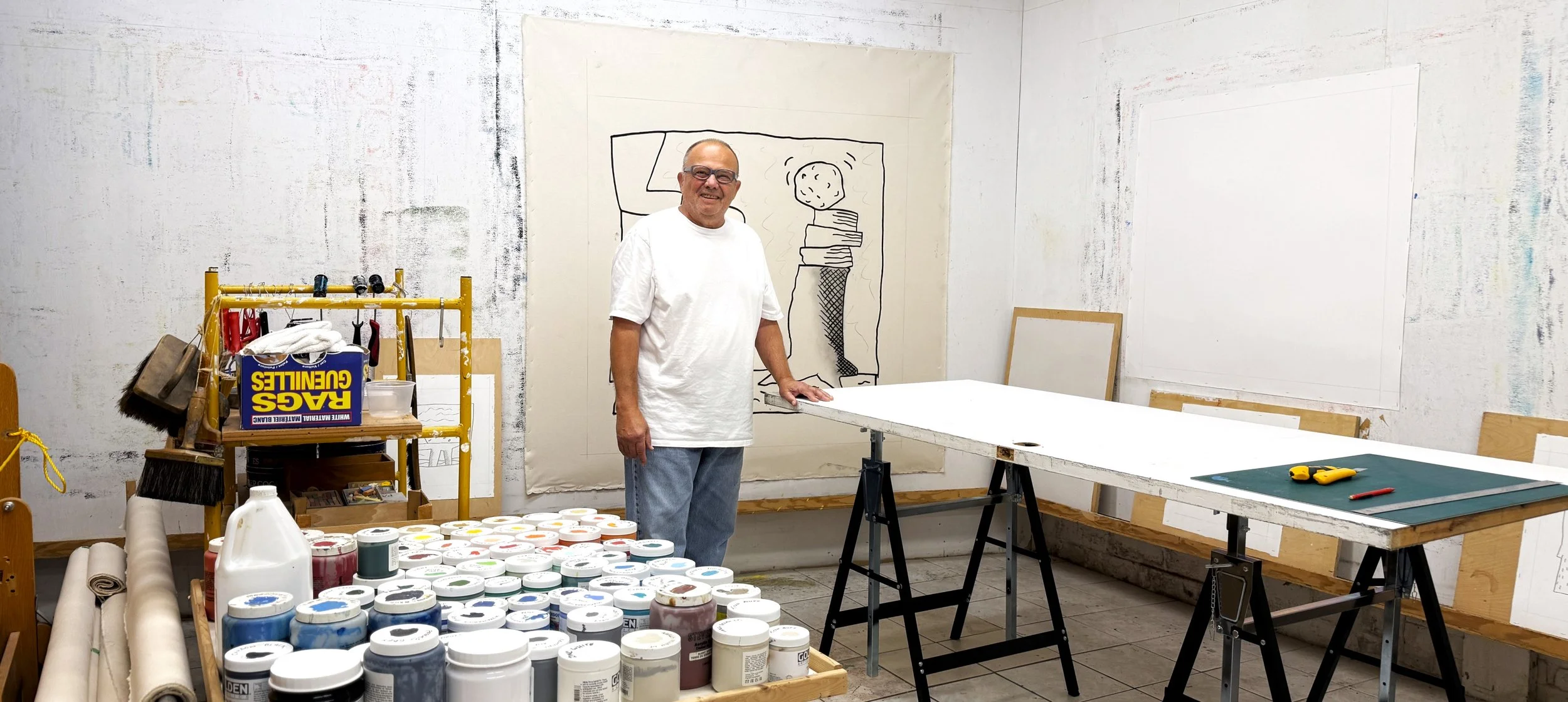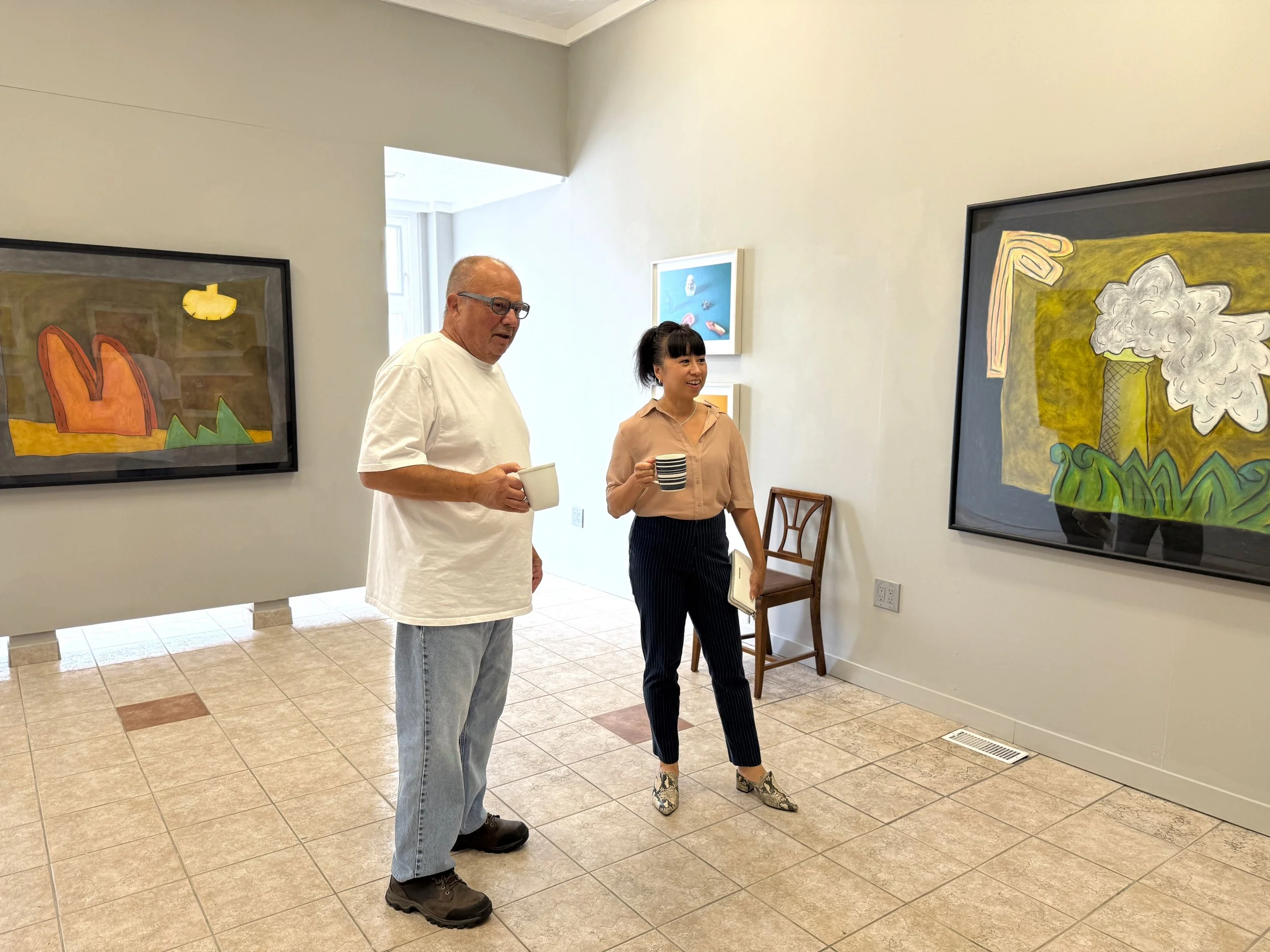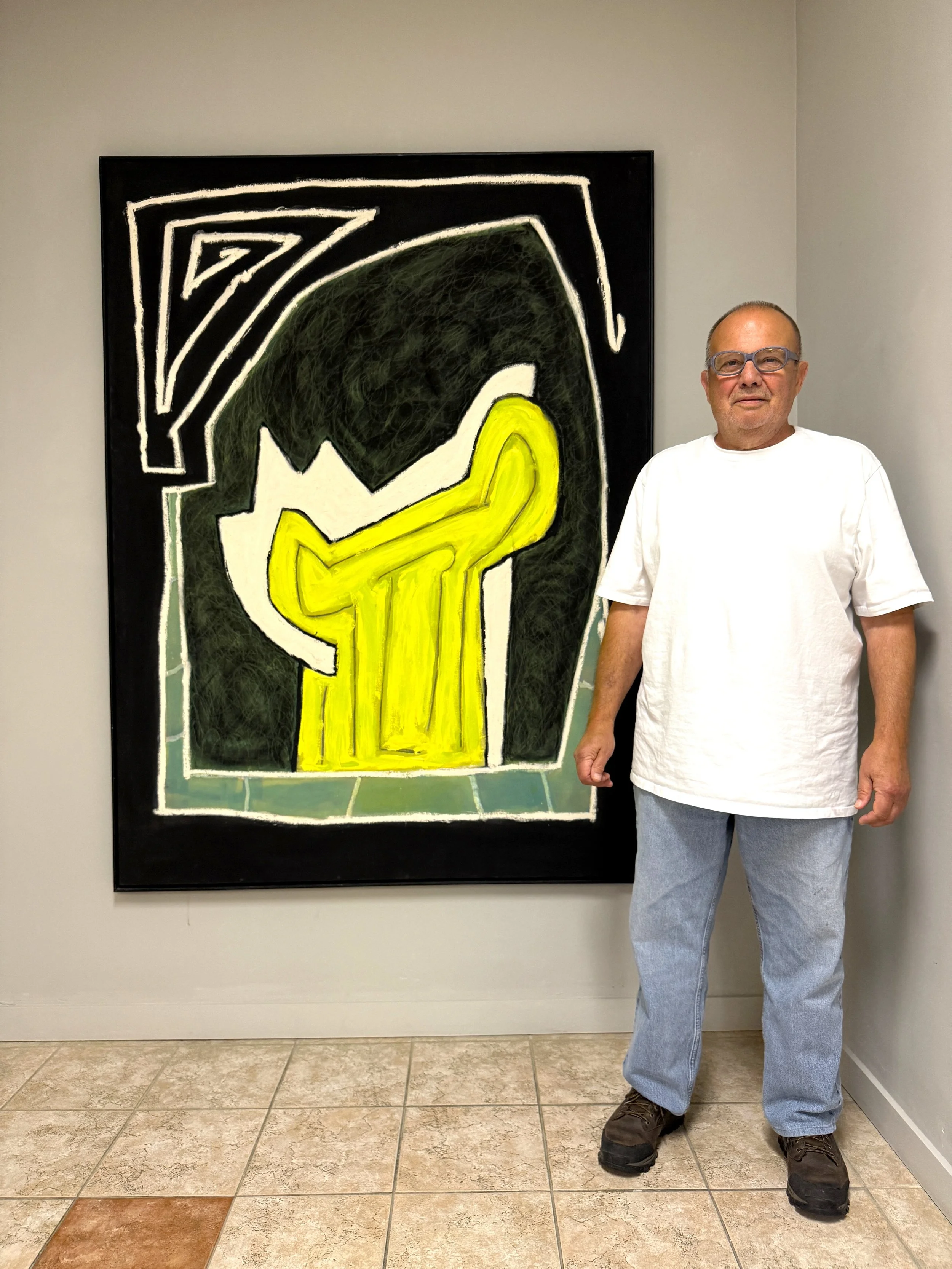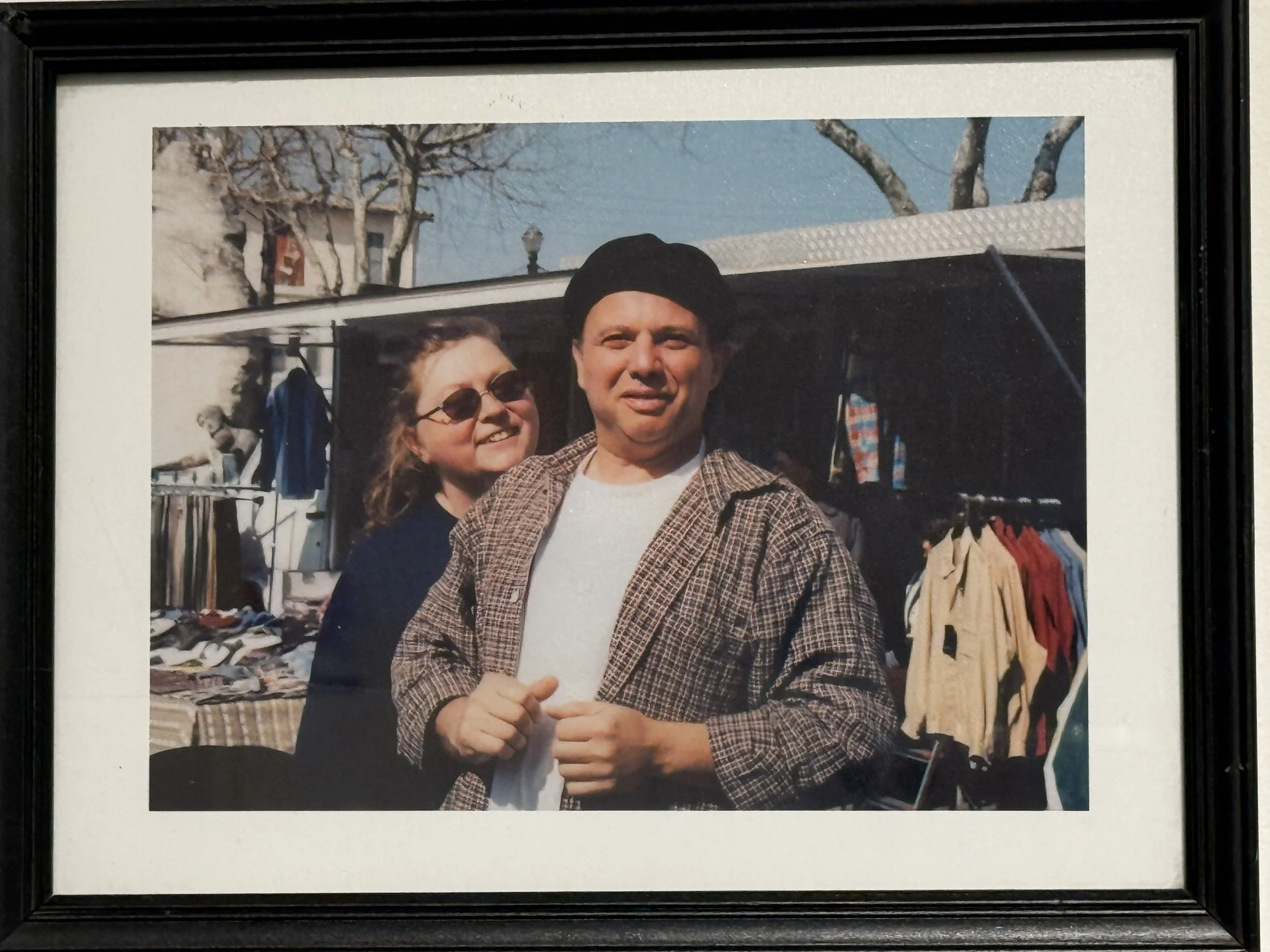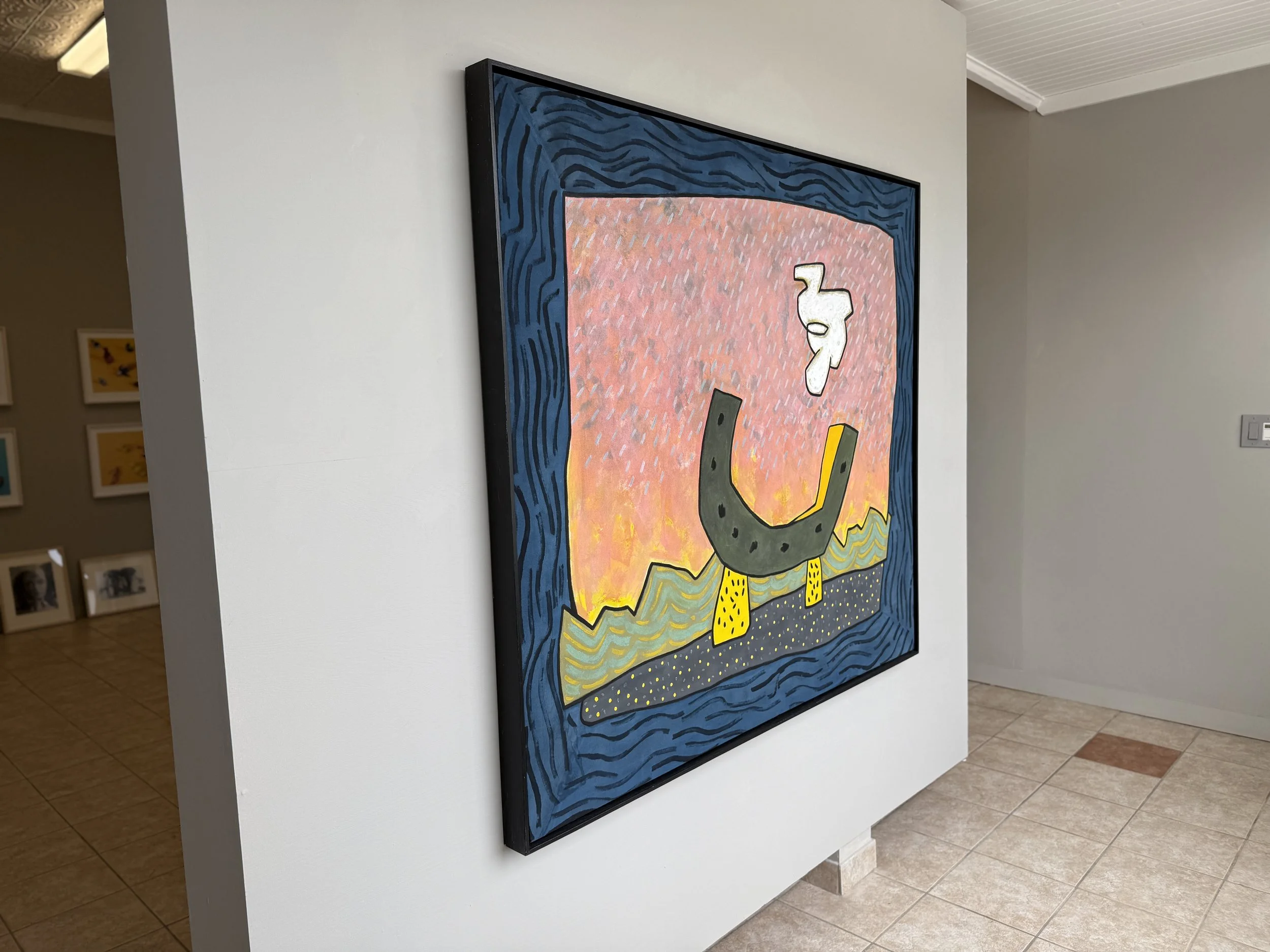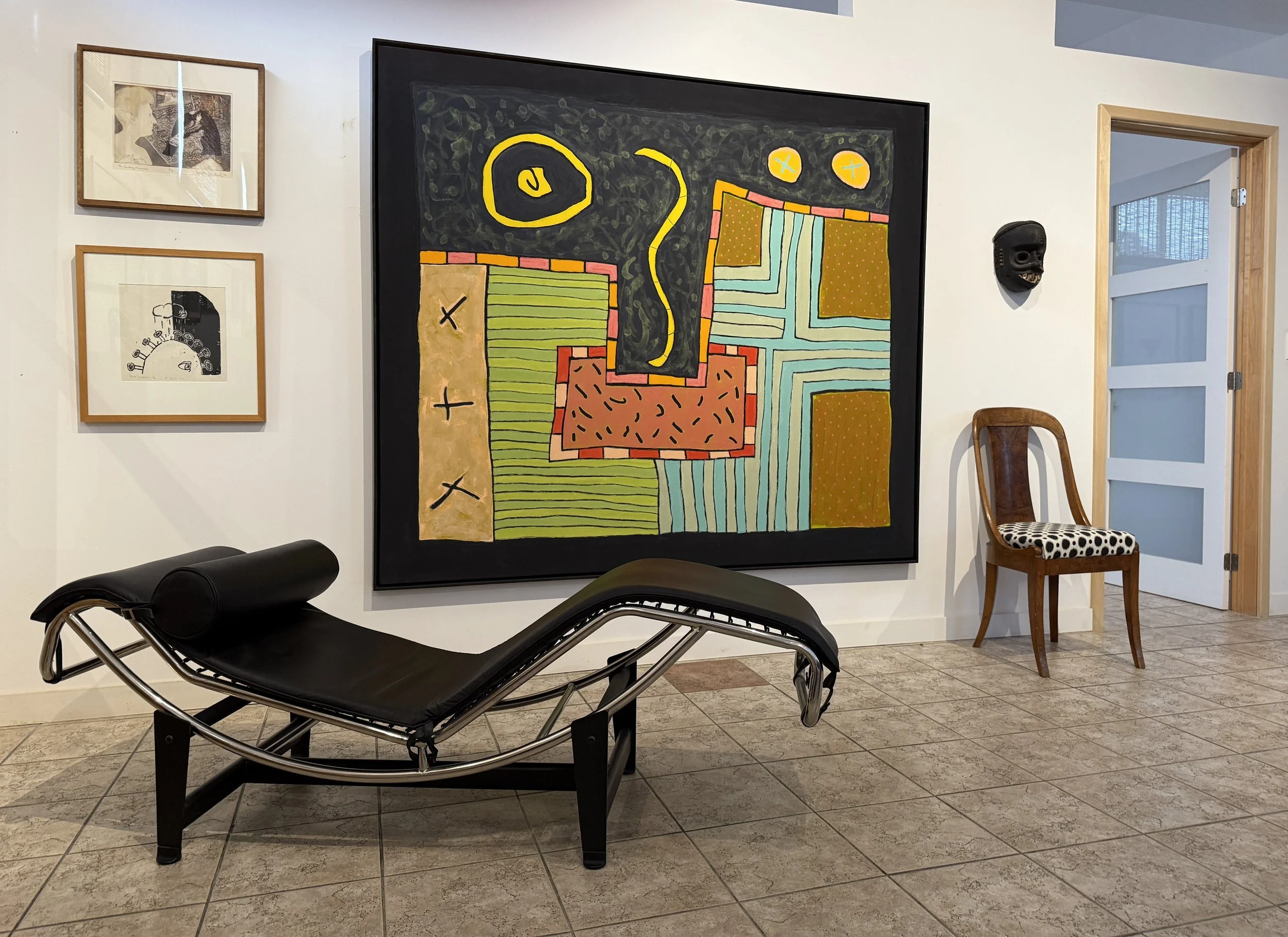Inside the Studio with Tony Calzetta — Stories, Myths, and a Living Legacy
Last week, Armstrong Fine Art Consulting had the privilege of visiting Tony Calzetta in his spacious studio-home in Welland, Ontario. Stepping inside felt less like entering a workspace and more like crossing into a gallery — a living world where Tony’s bold, imaginative paintings and the distinctive works of his partner, artist Gabrielle de Montmollin, hang side by side. Together, they have also built an extraordinary collection of art by other artists. Proudly displayed and lovingly named one by one, these works mingle with their own, surrounded by history, stories, and the kind of large studio space that fuels their ongoing creativity.
For many years, Tony lived in Toronto’s east end near Danforth and Broadview, where he was firmly woven into the fabric of the city’s urban art scene.
His career took root in that energetic environment, one filled with galleries, friendships, and the kind of late-night conversations that shape creative communities. But like so many artists, the rising cost of living in the city eventually forced him to look elsewhere, and about ten years ago, Niagara became his new home.
Now at 80, Tony may be geographically removed from Toronto, but his stories—and his art—carry with them the pulse of those earlier years. Standing with him in his Welland studio, I realized that his presence in Niagara is something of a quiet treasure. Here is an artist whose work has been exhibited nationally and internationally, from Mira Goddard, Fran Hill, Yumart and Moore Gallery in Toronto to the Venice Biennale, yet he remains approachable, witty, and brimming with tales.
As we walked through his studio, Tony shared anecdotes that felt like urban myths—stories of artists, exhibitions, and moments that shaped Toronto’s cultural identity in the latter half of the 20th century. His artworks, often described as “abstract funnies” or “surreal cartoons,” mirror this storytelling spirit: playful on the surface, layered with meaning, and open to countless interpretations.
What struck me most was the sense of continuity between the man and the work. Just as Tony’s lines and shapes invite viewers to create their own narratives, his recollections of Toronto’s art scene invite us to imagine a cultural landscape that was buzzing with energy and possibility. In many ways, he embodies a living history of Canadian art—an artist whose career bridges the excitement of Toronto’s past with the quieter, yet deeply productive, pace of Niagara today.

